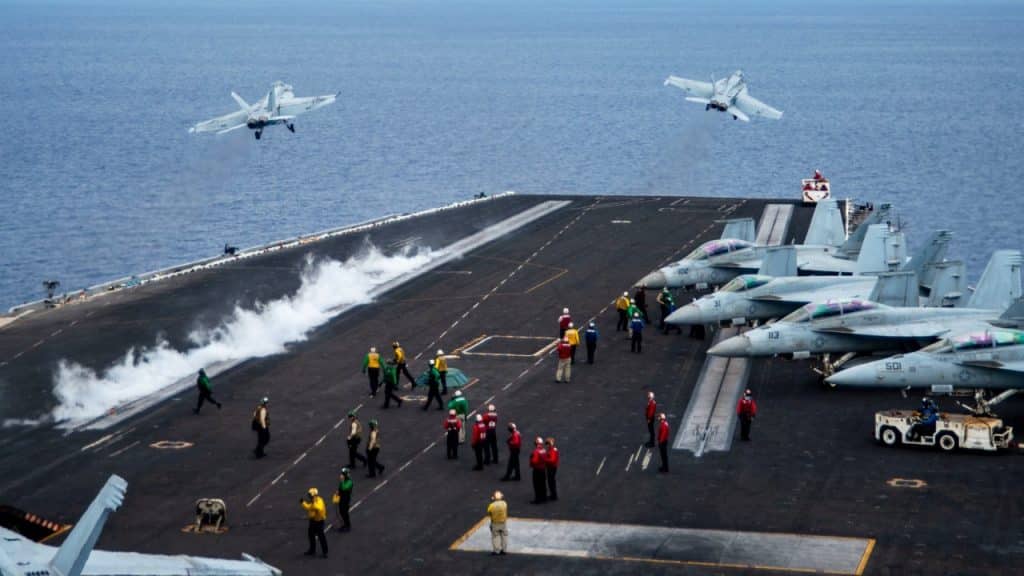The US Navy has announced that the F / A-18E Super Hornet combat aircraft, which fell from the carrier USS Harry S. Truman (CVN 75) into the depths of the Mediterranean Sea, on July 8, has been lifted from the bottom. The operation was performed on August 3. The machine lay at a depth of 9,500 feet, or 2,900 meters.
Recall: the plane was blown into the water when the ship was hit by an unexpected deterioration of the weather – gusty winds and heavy rain. The accident happened while Truman was walking alongside the USNS Robert E. Peary (T-AKE 5) and USNS Supply (T-AOE 6) supply ships, and that when the accident occurred, the carrier’s re-supply operation was immediately – and seamlessly – discontinued. There was no one in the cabin of the plane.
-ADVERTISEMENT-

Maritime Construction Services and its MPV Everest vessel specialized in various deep-sea works were involved in lifting the aircraft from the bottom. Phoenix International, the sea rescue company, also participated. At the beginning of the year, it helped in the recovery of the F-35C Lightning II from the bottom of the Pacific Ocean, which crashed and fell overboard in January on the USS Carl Vinson (CVN 70) aircraft carrier.
Keppel Delivers ‘MPV Everest’ to Maritime Construction Serviceshttps: //t.co/EKYiIcrjbl pic.twitter.com/2Zbc69w12F
– Offshore Energy – Subsea (@subseaworldnews) December 18, 2017
The operation used the CURV-21 (Cable-controlled Undersea Recovery Vehicle) underwater robot, which attached a rig to the Super Hornet and a hook to it. Thanks to this, the plane was lifted on board the Everest. The CURV-21 is a relatively large device: it weighs 2,900 kilograms. It is wired with optical fiber, has a frequency modulated continuous wave sonar, can go down to 6,100 meters and reach a speed of 2.5 knots.
Robots of this type are regularly used in similar projects, including the extraction of the aforementioned F-35C or (last year) the MH-60S Seahawk helicopter resting at a record depth of over 19,000 feet (5,800 meters). It is a well-deserved family. The ancestor of the current generation of robots – the CURV-1 – picked up a thermonuclear bomb that the Americans lost in a plane crash over Palomares.
The excavated machine was transported to an undisclosed airbase in Europe, from where it is to be taken to the United States. Probably that undisclosed place was Sigonella, as it is known that on the same days Everest entered the port near this Sicilian base.
Immediately after the accident, it was speculated that the US Navy would want to lift the plane. The Super Hornet is obviously a construction less advanced than the Lightning II, so if it were brought out by the Russians instead of the Americans, it would theoretically be a relatively minor problem. In practice, however, the Pentagon could not afford to let the fighter fall into the hands of a potential enemy. The protection of the AN / APG-79 radar on its own would be a sufficient reason to organize a rescue operation.
No further information on the possible causes of the accident has yet been disclosed. It is not even known to which squadron the unlucky machine belonged.
Truman and his escort and air wing have been in the Mediterranean Sea since March. Defense Secretary Lloyd Austin has extended the strike group’s operational cruise in order to protect NATO member states from possible further aggression by the Kremlin. Truman’s place under the aegis of the European Command may be taken by USS George HW Bush (CVN 77) later this month.
See also: What can you expect from a future British submarine?
US Navy / Mass Communication Specialist 2nd Class Crayton Agnew

